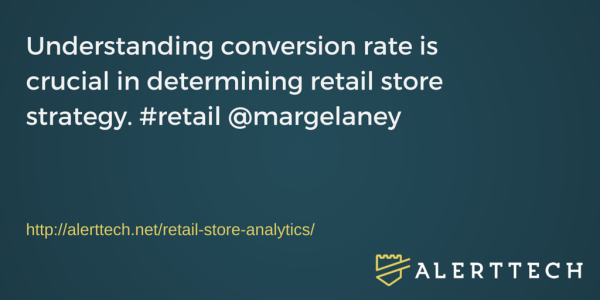Have you ever taken a look at your business statistics? Do you know what areas you need to improve in your company?
Retail analytics is the process of capturing data and then analyzing it to determine what processes and strategies are working and which need to improve. Regardless of the size of your company, analytics can prove beneficial in many ways. Retail store analytics allows you to gather a diverse set of measurements from multiple stores to determine performance both at a store level and company-wide.
Retail store analytics can be simple and straightforward or extremely in-depth and involved. It depends on the types and amount of data measured, the measurement process, and the tools used to capture and analyze the data. Your retail analytics program will be most successful if it is tailored to fit the needs of your business.
If your company is ready to use analytics to go from surviving to thriving, then dig in and examine five questions that retail analytics can help answer for your business.
[xyz-ihs snippet=”TOFU2-Retail-Technology-button”]
Do Our Stores Convert Browsers Into Buyers?
You may have thousands of people coming into your store every day, but are your revenue numbers as high as they should be? How many browsers are you converting into buyers? Are the conversion numbers higher in some store locations than others?
Using people counters, you can determine the sales conversion ratio. Sales conversion is the number of individuals who make a purchase divided by the number of individuals who come into the store. Understanding the conversion rate at each store location is crucial in determining store strategy including layout, staffing, and product mix.
Are Your Promotions Effective?
Promotions are a great way to draw new customers to your business. After all, most people love saving money!
Unless you cater to very high-end clientele, your customers are likely looking for a bargain wherever they can find one. Testing multiple promotions against each other will enable you to learn which promotions have the highest conversions and total sales value. Every promotion should have a tracking code so you can use analytics to determine what promotions are working the best and which ones to discard.
When you combine promotion analysis with other analytics metrics like people counting, you can see which promotions lead to the greatest increases in foot traffic and which increase store conversions the most.
The basic question that is asked when measuring promotional effectiveness is as important as it is obvious: Did the promotion drive a sales increase? Clearly driving sales is the primary goal of a promotion, but there are other ways manufacturers and retailers determine the effectiveness of a program using advanced metrics. – ToolBox Solutions
Is Each Retail Store Getting the Same Results?
If you own or manage a chain or retail stores, you might have storefronts located throughout various cities, states and countries. Do you see the same results at all stores? Not likely unless the demographics and psychographics of the customer base are very similar.
Typically customers will respond differently to the product mix, layout, promotions and staff in different locations. Retail store analytics allows you to capture and analyze many different variables to hone in on a particular strategy for each store location.
A well-designed analytics program will capture and clearly communicate data across many essential data points allowing store management to adjust strategy quickly. Further, the data allows for sound decision making based on known data.
Are You Managing Queue Times Effectively?
Your customers hate to wait! Whether waiting in line to use a fitting room or to pay for a purchase, nothing will cause more lost sales than long lines.
Using retail store analytics you can get a clear picture of the wait times your customers are experiencing. Then take action:
- Utilize technology, like SMS notifications for available fitting rooms, to clearly communicate wait times to customers.
- Implement policies that minimize wait times.
- Limit the number of items that can be taken into a fitting room.
- Have policies for the maximum number of customers in line before another register must be opened.
- Optimize staffing levels based on expected traffic patterns based on days of the week, times of day, seasons and promotions.
What Are Optimum Staffing Levels?
Proper staffing is a critical component of ROI for retail businesses. Having too much staff on hand is a big drain on your revenue, but too little staff leads to poor customer service, messy stores and long waits. You must make sure you have ample staff on hand during your peak operating hours.
Customers should never be stuck wandering around your store trying to find the item they came in for. They should be able to turn around and find an associate who is right there with a smile on their face and ready to help… and close the sale!
Retail analytics will clearly communicate the peaks and valleys of customer traffic allowing store managers to plan staffing levels and break times.
[Tweet “Retail Survival! 5 Mysteries Analytics Can Solve #retail @alerttechinc”]
[xyz-ihs snippet=”TOFU2-Retail-Technology-button”]
Conclusion
Retail store analytics is one of the most beneficial tools you can use for your business. By analyzing all of the data collected, you can determine where your company is falling short and what strategies are successful and which need a makeover. With all of the data at your fingertips, you will be able to customize your business approach and increase your revenues.
Do you own or manage a retail apparel store that needs more ideas for implementing a successful in-store retail analytics program? Download the whitepaper below and learn to get higher returns from your brick and mortar investment.
[xyz-ihs snippet=”TOFU2-Retail-Analytics”]

